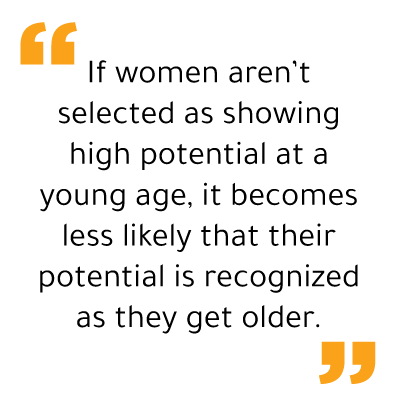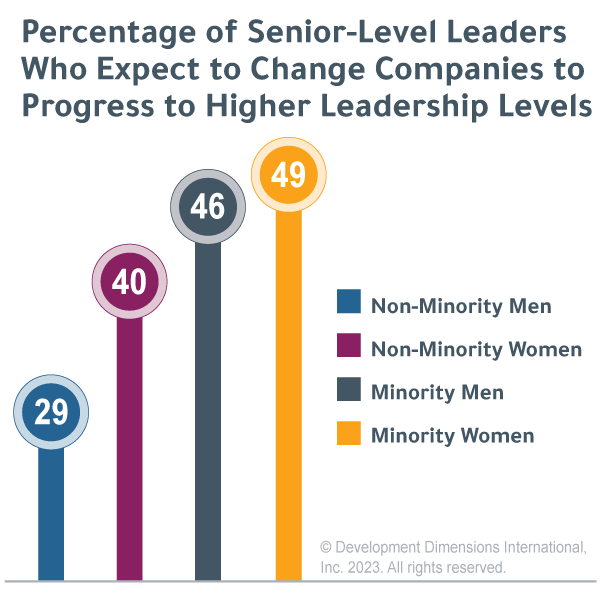In the wake of a hurricane that hit the southern United States, one executive woman I coached was struggling. Not only was she the only woman on the executive team, but she was also significantly younger than her counterparts. She went on to say, “I’m living in a one-bedroom hotel room with my husband, kids, and dog, trying to make it through the day. Meanwhile, everyone else has children who are much older or no longer at home.”
She felt like she had to hide what was really going on with her, even though it was not her fault a hurricane hit. Her colleagues just wouldn’t get it. So instead, she struggled, spreading herself far too thin as she tried to address the basic needs of her family while attempting to appear to her colleagues like nothing was wrong.
As an executive coach, I’m seeing an increasing number of these struggling executive women. Many of them have risen through the ranks quickly, and now have colleagues who are decades or more their senior.
While it’s a positive sign for more women to advance and a benefit to their companies to nurture their talent, there’s a risk. If we don’t recognize the challenges facing these younger executive women, they are likely to burn out, at a loss to both their own careers and to their companies.
In this blog, I’ll discuss women executives and the age gap, and the challenges they face because of it. I’ll also provide four tactics women executives can use to address the age gap.
The Growing Age Gap of Women Executives

According to LinkedIn research, while fewer women are promoted to leadership roles, those who are tend to be put on the fast track at a younger age. In the United States in particular, government data shows that women leaders are more likely to be younger workers, who are more educated and unmarried.
The big picture shows a concerning bias. If women aren’t selected as showing high potential at a young age, it becomes less likely that their potential is recognized as they get older. This is a problem because older women who might have been overlooked earlier in their careers—especially those who may have taken time away from work when their children were young—continue to be overlooked as they get older.
On the flip side, women who are identified as high-potential leaders earlier in their careers experience a different set of challenges as they accelerate through the ranks. As they rise quickly, they notice that their peers are often much older. As a result, they’re not only facing a gender gap, but an age gap.
How the Age Gap Compounds Challenges for Women Executives
One of the most common challenges I hear from women executives is that they struggle to feel like they’ve earned their place alongside more experienced peers. As a result, they feel like they constantly have to prove themselves.
This can come off negatively; compounded by general perceptions of women leaders. While men in leadership roles are often applauded for assertiveness, a woman leader with this trait may be perceived as abrupt or lacking consideration. While this perception may not be fair, it’s a real challenge women may need to navigate.
Another common challenge is that some women executives with younger children feel like they need to hide their responsibilities at home. This can be especially exhausting, both mentally and physically. Women leaders may find themselves up late at night working on a big presentation for the next day because they spent the day caring for a sick child.
Meanwhile, for many of their older colleagues, these memories are long gone. Some of the executive women I coach have found it helpful to share with gentle reminders: “Yes, I was up late last night with my sick son. I’m sure you’ve been there many times!”
Additionally, many of these women who have risen rapidly may struggle to pick up the unspoken “rules of engagement.” This can be particularly challenging for women of color or who come from different ethnic backgrounds than the majority. Often, people expect you to know the right things to do. Who should be picking up the check at a business lunch? When does teasing a colleague help to build rapport, and when is it ill-received? When is it okay to show frustration—if ever?
These complex cultural nuances are often part of the culture many male majority executives have been exposed to for decades. For those entering quickly or from a different cultural perspective, it can be very challenging to pick up.
4 Tactics Women Leaders Can Use to Address the Age Gap
What can women executives do to combat the challenges they face due to the age gap? Here are four unique tactics to help:

1. Make time to build bridges, even when it’s uncomfortable.
Women leaders can take the lead in scheduling networking opportunities to ensure it fits into their schedules. For example, plan a networking lunch during the workday. Another idea is to block out time every so often to send a note or a chat to senior leaders above you (or your peers who are leaders) to learn about projects or topics you are interested in that fall outside your realm.

2. Ask open-ended questions.
There’s no way to avoid the experience gap. And at high levels of leadership, it can be difficult to admit you don’t have all the answers. However, asking good questions can go a long way. Doing this shows you are interested in other perspectives to help you create strategies and solve business challenges.

3. Look for men allies who “get it.”
Men leaders can be great allies to young women executives. Especially those who remember what it was like working when their own kids were little. Look for men leaders who can use their pull to advocate for women leaders, particularly among other men leaders who may need some influencing.

4. Stay focused on what matters most.
One of the biggest problems is that amid all these other challenges, women are getting bogged down in so many other “non-promotable” tasks that don’t help them get ahead. They need to say no to these types of tasks and focus instead on investing their time in tasks to impact their career for the better.
The Benefit of Having an Executive Coach Who Shares Your Background
While the tips above can help young women executives start on the right path, there will be a number of specific situations that an executive coach can help with. The challenge, however, is that many of these women don’t fully trust their coach.
A great executive coach can successfully coach anyone, regardless of whether they share gender, ethnicity, race, etc. However, there are benefits to having a coach who shares some background and characteristics with you. For example, coachees tend to share more of their real concerns and stories with someone who looks like them.
However, many women executives (and especially minorities) tend to feel like they need the approval of their boss when choosing an executive coach. Most prefer a coach who understands and shares their concerns, but there is also a fear of the optics when choosing someone like them. So, often, they defer to their boss’s choice, or choose the coach they think their boss would most likely prefer.
But executive coaching is only as effective as the effort and engagement you put into it. If executives feel the need to hold back part of the challenges they are experiencing, they are less likely to be able to move forward.
Your executive coach should be there for you. Their job is to help you candidly address the real and difficult challenges you face, rather than pretending they aren’t real.

Set Up Women Executives to Succeed
These challenging headwinds set up highly capable women to fail. They also contribute to women leaving organizations to climb higher in their roles. According to DDI’s Global Leadership Forecast research, 40% of senior-level women (and 49% of senior women who are racial/ethnic minorities) feel they need to leave their companies to advance, compared to only 29% of non-minority senior-level men.
Additionally, the age gap, along with gender bias, fuels burnout among women in the workplace. DDI research shows that 77% of women leaders are on the brink of burnout, compared to 66% of men. Not to mention, the glass cliff is real, especially for minority women executives.
Alarms have been sounding for some time now. Companies need to get women executives the support they need so that the compounding factors of gender, age, and potentially minority status don’t prevent highly talented executives from reaching their potential.
Learn more about DDI Executive Coaching.
Janice Hale-Harris is an executive coach at DDI. In her spare time, you will find her on the dance floor or whipping up a great meal.
Topics covered in this blog

